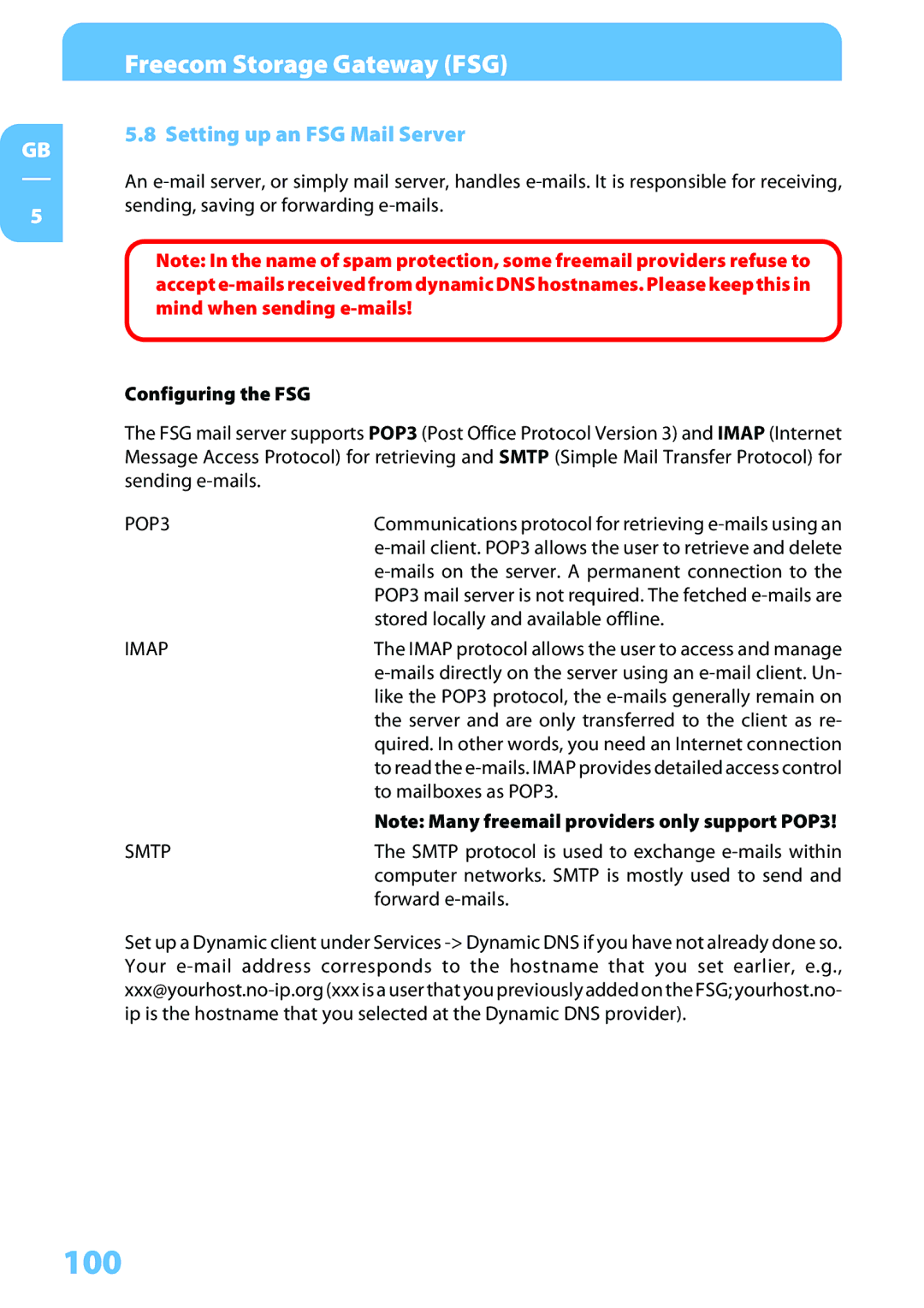
GB
5
Freecom Storage Gateway (FSG)
5.8 Setting up an FSG Mail Server
An
Note: In the name of spam protection, some freemail providers refuse to accept
Configuring the FSG
The FSG mail server supports POP3 (Post Office Protocol Version 3) and IMAP (Internet Message Access Protocol) for retrieving and SMTP (Simple Mail Transfer Protocol) for sending
POP3 | Communications protocol for retrieving |
| |
| |
| POP3 mail server is not required. The fetched |
| stored locally and available offline. |
IMAP | The IMAP protocol allows the user to access and manage |
| |
| like the POP3 protocol, the |
| the server and are only transferred to the client as re- |
| quired. In other words, you need an Internet connection |
| to read the |
| to mailboxes as POP3. |
| Note: Many freemail providers only support POP3! |
SMTP | The SMTP protocol is used to exchange |
| computer networks. SMTP is mostly used to send and |
| forward |
Set up a Dynamic client under Services
